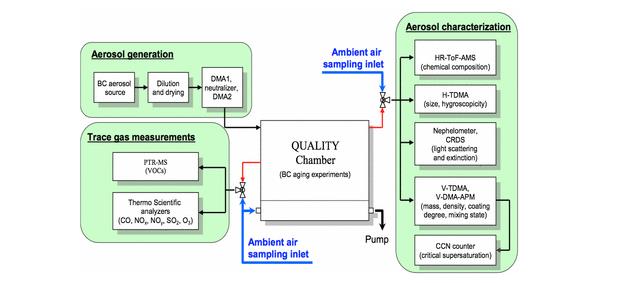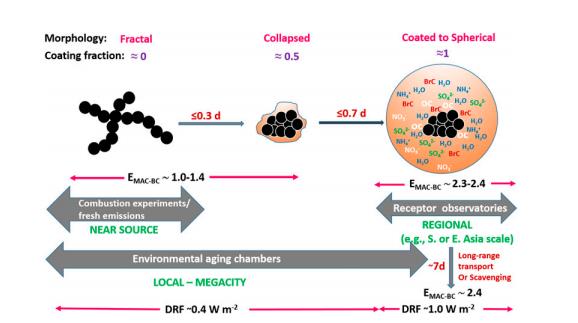Peking University, May 9, 2016: People living in Beijing will be familiar with the smog. One major component of the smog is black carbon (BC), fine particles produced from incomplete fossil fuel combustion and biomass burning. Do you ever think that these black carbon particles may also contribute to global warming?
Interestingly, scientists have very different answers to this question. Some scientists say black carbon’s effect on global warming is insignificant. Some say it is large. The estimated DRF (direct radiative forcing, DRF) of black carbon, an index of how severely BC warms the world, ranges from about 0.2-1 W.m-2, a poorly constrained estimate.
Now, Professor Hu Min and her group are going to give their convicting answer to this question. They design a novel method to quantify black carbon’s contribution to global warming. Interestingly, their explanation may also tell why scientists have so many conflicting answers about black carbon’s DRF.
The team develops a system called QUALITY chamber. This system can detect the temporal variation of the BC particle properties. Using this system, researchers find out BC particle will go through two typical stages: from fractal to spherical morphology, and from spherical morphology to fully compact particles. In the first stage, BC particles show low light absorption (low DRF); while in the second stage, BC particles rapidly enhance light absorption (high DRF). The more light it absorbs, the more it contributes to global warming. This also explains why scientists get different results: some of them measure DRF of fresh BC; some of them measure DRF of aged BC.

Figure 1 Illustration of QUALITY chamberFrom Jianfei Peng et al.; “Markedly enhanced absorption and direct radiative forcing of black carbon under polluted urban environments”, PNAS. 2016 April 19. 4266–4271, doi: 10.1073/pnas.1602310113.

Figure 2 Illustration of BC particles ageing processFrom Örjan Gustafsson et al.; “Convergence on climate warming by black carbon aerosols”, PNAS. 2016 April 19. 4243–4245, doi: 10.1073/pnas.1603570113
The speed of BC particle aging is also influenced by environment. In a more polluted environment, BC particles transform more quickly. The team records a 2.3 hours-4.6 hours timescale for BC particles to change from fresh to fully aged particles in Beijing, while in Houston, it takes 9 hours-18 hours.
Their work offers a novel model to study black carbon particles. As Veerabhadran Ramanathan, a distinguished atmospheric scientist from UCSD, says in a commentary article, “this will close the factor of 2–3 gap between model predictions and observations on the effect of BC aerosols on climate”.
This work was supported by National Natural Science Foundation of China, the National Basic Research Program, China Ministry of Science and Technology, National Natural Science Foundation of China, and the China Ministry of Environmental Protection's Special Funds for Scientific Research on Public Welfare.
For the original PNAS paper, please click:
For Professor Veerabhadran Ramanathan’s commentary article, please click:

